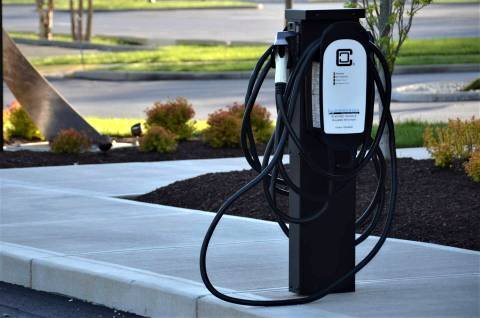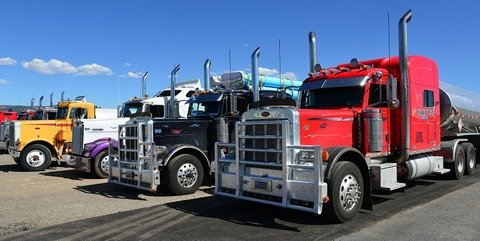

Making the Electric Move More Manageable
Electric vehicles (EVs) are the future of the automotive industry because they eliminate emissions and are easy to maintain. However, the transition can be challenging for companies on tight budgets. How can you convert your fleet to electric trucks?
Here’s a step-by-step guide to make the change more manageable.
1. Set a Timeline
First, it’s essential to set a timeline and decide how quickly you want to transition the vehicles. Here, the company’s fleet size and budget matter the most. A complete overhaul could require a significant upfront investment, so a gradual transition could make the most sense. Some state regulations, like the Advanced Clean Fleet Rule in California, may dictate the pace of your transition.
Logistics managers should also consider their operations and downtime when switching to electric trucks. A staggered strategy lets companies minimize disruptions and keep vehicles on the road. Drivers also may need time to learn the new trucks and make adjustments.
2. Calculate Driving Needs

A critical factor for an electric truck fleet is the range. EVs can only last so long on the road before needing to recharge, so fleet owners should calculate their driving needs. How long are your routes? Are there charging stations? These factors affect how feasible these vehicles will be for your business.
Charging stations deserve special attention because trucks need them for long-distance hauling. Research shows the U.S. has over 168,000 public charging outlets, though not all are appropriate for trucks. Some highways have stations for them, but there aren’t many at present. That is changing as Bipartisan Infrastructure Law funds dedicated to commercial infrastructure development have stimulated substantial construction of new charging depots.
3. Set a Budget
Ultimately, your budget determines which electric trucks fit with your fleet. These heavy-duty vehicles are expensive upfront, so be prepared to invest significantly. That said, logistics managers should consider long-term finances because EVs are generally cheaper to maintain.
The costs per truck can be expensive, especially if you choose one of the top EV manufacturers. For instance, the all-electric Tesla Semi costs $250,000 (according to reports, few have made their way onto the market so far). Other electric big rigs that are available from major players like Freightliner and Volvo are even more expensive. That could be burdensome for most fleets. Prices could decrease later with more competition, but the upfront costs remain high.
4. Use Financial Incentives
While electric trucks are expensive, logistics companies should consider internal and external financial incentives. Reduced fuel costs are an immediate benefit because you no longer have to fill up with diesel. Many fleet owners can take advantage of state and federal purchase incentives to ease the burden.
The most significant federal incentive is the commercial clean vehicle credit. Fleet owners can qualify for a credit of up to $40,000 if they meet the criteria. For instance, the company must primarily use the vehicle in the United States and not resell it.
5. Obtain Charging Equipment

Battery capacity and charging times can make some fleet owners nervous. However, you can control some of it by obtaining charging equipment for your home base. These stations ensure drivers charge before they leave and save time before hitting the road, thus increasing uptime.
Electric trucks need powerful chargers because of their giant batteries. The most efficient choice for your fleet is a DC fast charger, though it’s the most expensive. This station provides an 80% charge in 30 minutes for an average vehicle with a 100-mile range. A full-charge for a typical 250-mile range big rig will take a couple hours, but faster charging standards are coming in a few years and some charging equipment is already being installed. A level 2 charger with 240V could work for overnight charging, but fleet owners should avoid a level 1 device.
6. Prepare for EV Maintenance
EVs have a strong reputation for low maintenance. The machines don’t require long days in the shop since there are fewer moving parts. However, electric trucks still need checkups to remain viable over the long haul. Logistics companies should train their employees on the best upkeep practices.
The most pressing maintenance task for electric trucks is checking the battery. Regular inspections are needed to gauge its capacity, considering its importance to uptime. Your team should inspect the surrounding charging cables and other parts for damage and overheating issues.

7. Optimize Battery Usage
Fleet owners should optimize battery usage to get the most from their trucks if the range is concerning. One of the best ways to maintain the batteries is not fully charging them. Experts say to cap charging at 80% to prolong battery life and improve its long-term balance.
Another way to help your electric truck battery is to minimize wasting it. Fleet managers should remind drivers not to deplete their vehicle’s capacity by idling or speeding on the highway. Electrified fleets benefit from telematics devices because they track driver metrics and send the data to the company.
8. Track Savings Over Time
Depending on the size of the fleet, the transition to electric trucks could take months or even years. Regardless, logistics managers should track the savings over time to ensure financial responsibility. Patience is necessary because you might not break even for a few years.
Gauging savings starts with comparing the total new costs to the old fossil fuel-powered trucks. For instance, fleet owners should monitor charging expenses and see how they measure against diesel expenditures each quarter. The business should also track savings with maintenance, emissions and other vital benchmarks.
Building an Electrified Fleet
Converting truck fleets to EVs is essential for the entire fright movement industry. However, the transition won’t happen overnight. Fleet owners should meticulously plan the transition to maximize the benefits for their company.
With an effective plan, you can electrify your fleet and minimize operational downtime.
The post A Step-by-Step Guide to EV Fleet Transition first appeared on Clean Fleet Report.Source link by Clean Fleet Report
Author Martin Banks
#StepbyStep #Guide #Fleet #Transition







